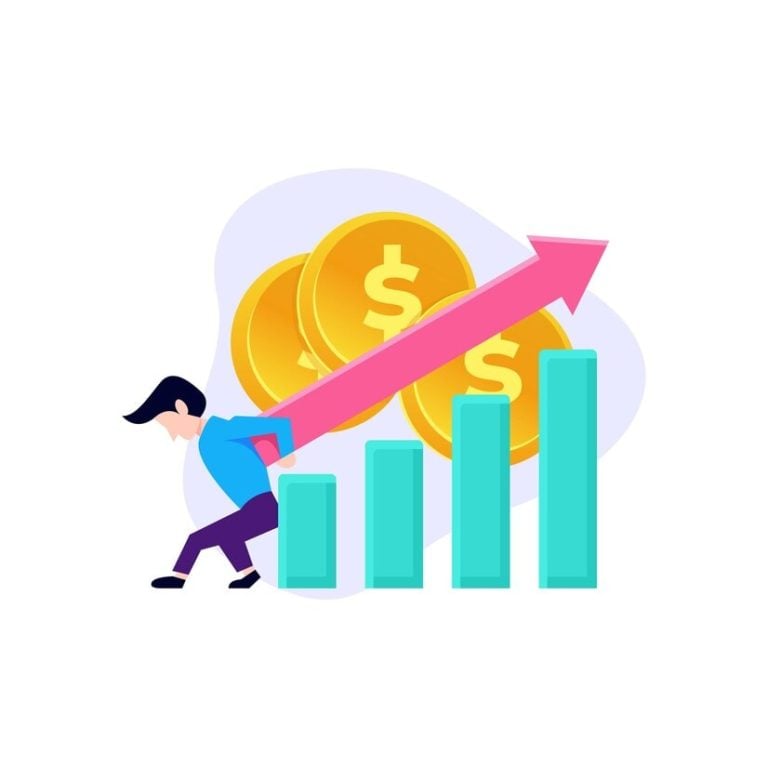Raising prices feels like telling someone you’ve been dating that you’d like to see other people—a conversation that could end badly. Yet, in 2025, with higher inflation pushing costs up by 8.3% across supply chains, price hikes aren’t just an option—they’re a necessity for survival for consumers. Understanding the dynamics behind these adjustments is crucial. Exploring how the increasing cost industry shapes business strategies can provide valuable insights into anticipating and managing these changes effectively. For a deeper dive into these economic influences and practical advice for businesses navigating this landscape, check out our detailed analysis on the evolving [cost industry trends](https://metrobi.com/blog/how-the-increasing-cost-industry-impacts-your-business).
In addition to general price adjustments, businesses must grasp the broader economic forces at play in the rising cost industry. Understanding these trends is vital for anticipating cost pressures and devising effective strategies to maintain profitability without alienating customers. For those seeking actionable insights and comprehensive information on navigating this complex landscape, our in-depth post on navigating the increasing cost industry is an excellent resource.
Most business owners get this wrong. They announce price changes with corporate-speak emails that start with “Due to increased operational costs…” and watch as customers run to competitors. Or worse, they avoid raising prices altogether, slowly bleeding profit margins until most customers feel dissatisfied and their business flatlines.
A study from Harvard Business Review found that companies can retain up to 95% of their customers during price increases when they follow specific communication strategies.
The difference between losing customers and keeping them isn’t about the price increase itself—it’s about how you frame it, when you announce it, and what value you emphasize alongside it.
This guide contains the exact framework used by companies that successfully raise prices while maintaining their value proposition and sometimes even increasing customer loyalty. It’s based on data from over 200 business owners who navigated price increases in challenging economic environments, showcasing their ability to adapt.
Metrobi drivers are rated 4.97/5
Trusted by local businesses for:
- Background-checked professionals
- Specialized in business deliveries
- Same drivers for consistency
- 4.97/5 average delivery rating
How to Raise Your Prices Without Losing Customers

Timing, preparation, and communication are key to successful price increases.
Strategic price adjustments can improve profitability while maintaining customer loyalty.
Research-based pricing decisions reduce customer churn during transitions
Step 1: Conduct Market Research
Raising prices without losing customers starts with solid market research. This foundation helps you make informed decisions that customers will accept. You can start by creating a list of your direct competitors and recording their current prices for similar products or services based on their production cost. Note any recent price changes they’ve implemented and how their customers responded. This competitive analysis provides context for where your pricing fits in the market landscape.
Next, assess your product’s demand and value through customer surveys and sales data analysis. It is better to ask customers directly what they value most about your offering and how much they would be willing to pay. According to pricing research methods like Van Westendorp and Gabor-Granger, understanding price sensitivity helps determine the optimal price points where customers still perceive value. Pricing Research & Strategy Studies. Look at your sales data to identify products with inelastic demand—these items can often absorb price increases with minimal sales impact.
Creating Competitor Analysis Charts
You can create a simple chart comparing your prices against competitors across key product categories or service tiers. This visual representation helps identify where you might be underpriced or where you have room to increase without exceeding market norms. Include columns for:
Current competitor pricing
Their pricing 6-12 months ago (to spot trends)
Your current pricing
Your proposed new pricing
This chart becomes a strategic tool when discussing price increases with your team and later when explaining changes to customers.
Step 2: Evaluate Internal Factors
A thorough assessment of your internal business factors justifies price adjustments. You can begin by calculating exactly how much your costs have increased since your last price change due to Trump’s tariffs. Include raw materials, labor, shipping, overhead, and any other expenses that impact your bottom line. Express these increases both as dollar amounts and percentages to give clear context to your ability to make pricing decisions.
Review your current profit margins across product lines or service offerings. Identify which items have margins that have been squeezed by rising costs and which remain healthy. Price increases may be more urgent for low-margin offerings. Compare your margins to industry standards to ensure your business remains competitive and sustainable.
Adding Value Before Increasing Prices
Before implementing price increases, identify opportunities to add value that enhance the customer experience and strengthen your value proposition that customers will appreciate. This might include:
Expanding product features or service offerings
Improving the quality or durability of materials
Enhancing customer service or support
Extending warranties or guarantees
Offering additional training or resources
Step 3: Determine the Right Timing
The timing of your price increase can significantly impact customer reception. Research shows that introducing price increases alongside product upgrades or new features can enhance customer acceptance. Identify natural points in your business cycle where price adjustments feel most appropriate. For subscription-based businesses, this might be at renewal points. For seasonal businesses, prices might best increase before peak seasons when demand is climbing.
Consider external economic factors that might influence customer reactions. During economic downturns, price elasticity can increase by 25-50%, meaning customers become more sensitive to price changes. In contrast, during economic growth periods, customers may be more accepting of price increases. Pay attention to inflation rates, industry trends, and consumer confidence indicators before finalizing your timing.
Creating a Price Increase Calendar
Develop a detailed implementation calendar that outlines:
When research and planning are completed
When will internal teams be notified
When will customer communications begin
When the price increase takes effect
When will the follow-up customer feedback be collected
This calendar should span several months, giving you adequate time for preparation and customers sufficient notice before changes take effect.
Step 4: Decide on the Price Increase Strategy
Choosing between gradual and one-time increases depends on your specific situation. Gradual increases (often called “incremental pricing”) involve smaller, more frequent price adjustments. This approach reduces the shock of price changes but requires more frequent communication with customers. One-time increases are more straightforward to implement but must be carefully managed to avoid customer backlash.
The size of your increase matters too. Small increases (under 5%) often go relatively unnoticed, while larger ones require more explanation and lead time. If your costs have increased substantially due to tariffs from various countries, consider whether you can absorb some of the increase internally while passing only a portion to customers.
Segmenting Customers for Strategic Pricing
Different customer segments may warrant different pricing strategies. Consider segmenting your customer base by:
Length of relationship (new vs. long-term customers)
Purchase volume or frequency
Product or service tier
Industry or business size
Geographic location
For long-term or high-volume customers, you might consider grandfathering them at lower rates or implementing increases more gradually. New customers might start directly at the new pricing level. This segmented approach helps preserve relationships with your most valuable customers while maximizing revenue from newer relationships.
Step 5: Monitor Results and Gather Feedback
After implementing your price increase, establish a system to track key metrics that indicate its impact. Monitor sales volume, customer retention rates, and overall revenue weekly for the first month, then monthly for the following quarter. Compare these figures to pre-increase baselines to assess the true impact. Watch for changes in purchasing patterns—customers might shift to lower-priced alternatives within your product line or reduce order frequency.
Actively gather customer feedback through direct conversations, surveys, and social media monitoring. Tools like Enty can help streamline this feedback collection process. You can ask specifically about their perception of the price increase and whether they still feel they’re receiving appropriate value from the sales team. This feedback provides valuable insights for refining your approach and addressing any emerging concerns. In addition to managing price increases, it’s crucial to be aware of subtle changes like shrinkflation, where product sizes shrink but prices remain the same or even increase. This phenomenon often goes unnoticed by customers but can significantly impact perceived value. Understanding what shrinkflation entails and how to detect it can help businesses maintain transparency with their customers and uphold trust. For a deeper dive into this topic, check out our detailed post on identifying and combating shrinkflation.
Making Data-Driven Adjustments
Based on your monitoring and feedback, be prepared to make adjustments to your pricing strategy. These might include:
Reverting specific price increases that caused significant negative reactions
Adding more value to justify prices that customers questioned
Adjusting discounting strategies to address price sensitivity
Creating new product tiers or bundles at different price points
Implementing additional customer retention programs
Step 6: Prepare Your Team for Customer Questions
Your customer-facing teams need clear guidance on how to address questions and concerns about price increases. Develop a comprehensive FAQ document that anticipates customer questions and provides consistent, confident responses. This resource helps your team explain the changes without sounding defensive or uncertain.
It is best to train your sales and customer service teams specifically on how to discuss price increases. Role-play conversations where team members practice responding to customer objections or concerns. Emphasize the added value and benefits customers receive, not just the higher price. When team members understand and believe in the reasons for the increase, they communicate more authentically with customers.
Creating Scripts for Common Scenarios
Provide your team with sample scripts for handling different types of customer reactions:
For the customer who threatens to leave, scripts focus on relationship value and what they would lose by switching
For the customer asking for exceptions, clear guidelines on what discounts or special terms are authorized
For the customer who seems confused, simple explanations that clarify the changes and timeline are
For the customer who accepts readily, ways to thank them and reinforce their decision
These scripts serve as starting points that team members can customize to their style while maintaining consistent messaging.
Step 7: Test Your Increase with a Small Segment
Before rolling out a price increase across your entire customer base, consider testing it with a small segment first. You can select a representative group of customers (5-10% of your base) and implement the new pricing structure with them. This test provides valuable insights about customer reactions and allows you to refine your approach before wider implementation.
During this test phase, closely monitor both quantitative metrics (retention rates, sales volume) and qualitative feedback. Conduct follow-up calls with customers from the test group to get direct feedback about their perception of the change. This information helps you adjust your communication strategy, timing, or even the increased amount before it affects your entire customer base.
Analyzing Test Results
Create a structured analysis of your test results by examining:
Retention rates compared to non-test customers
Changes in purchasing behavior (order frequency, order size)
Customer service interactions related to pricing
Feedback themes and sentiment analysis
You can use this analysis to make data-driven decisions about your full rollout. If the test shows minimal negative impact, proceed with confidence. If significant issues arise, consider adjustments before moving forward with the complete implementation.
By following these seven steps, you create a methodical approach to price increases that maintains customer relationships while improving your bottom line. The key is balancing business needs with customer perception through careful planning, clear communication, and continuous monitoring of results. Shrinkflation, a subtle form of price adjustment where product quantities decrease but prices remain the same, is another tactic businesses are using amidst rising costs. Recognizing how shrinkflation affects consumer perception can help brands communicate changes more transparently and uphold trust. For insight into how shrinkflation is impacting various industries today, check out these detailed shrinkage in product size examples that businesses face currently.
Understanding real-world instances of shrinkflation provides valuable context for businesses considering how to manage pricing strategies without eroding customer trust. Numerous industries are experiencing this trend, where product sizes subtly decrease but prices hold steady or even increase. This tactic can be a double-edged sword, potentially preserving margins but risking customer dissatisfaction if perceived as deceptive. To equip yourself with practical knowledge and anticipate challenges, explore our comprehensive breakdown of notable shrinkflation examples affecting businesses today, which highlights how companies navigate this complex issue.
Communicating Price Changes to Customers

Clear communication prevents customer loss during price increases
Timing and channel selection are critical for customer acceptance
Personalized messaging builds trust and shows you value relationships
Step 1: Develop a Clear Communication Plan
Creating a clear communication plan is the foundation of any successful price increase. The message you send to your customers must be honest, straightforward, and focused on value rather than just cost.
You can start by drafting a message that clearly explains why prices are changing. Common reasons include rising operational costs, inflation, increased material costs, or adding new features to your products or services. Research shows that customers respond better to price increases when they understand the reasoning behind them. You shouldn’t hide behind vague corporate language—be direct and honest about what’s driving the change.
Next, highlight the benefits and value customers will continue to receive or gain from the new pricing structure. This shifts the conversation from what customers are losing (money) to what they’re gaining (value). For example, if you’re raising prices to improve product quality or customer service, explain how these improvements will benefit them directly.
Creating Value-Focused Messaging
When crafting your message, focus on specific examples of how customers benefit from your products or services. Include concrete examples like: “Our new pricing allows us to add three additional support staff, reducing response times by 40%,” or “We’re investing in higher-quality materials that extend product life by 30%.”
Step 2: Choose Appropriate Communication Channels
Selecting the right channels to announce your price increase is just as important as the message itself. Different customer segments prefer different communication methods, and using multiple channels ensures your message reaches everyone.
Email remains one of the most effective channels for B2B price increase announcements. It provides space for detailed explanations and allows customers to process the information at their own pace.
For high-value clients, personal outreach is essential. Schedule calls or meetings with your most important customers before sending any general announcements. This personal touch shows you value their business and allows them to ask questions directly.
Channel Selection Strategy
Create a communication matrix that matches customer segments with appropriate channels:
Tier 1 (top clients): Personal calls followed by a formal email
Tier 2 (mid-level clients): Personalized emails with offers for calls if needed
Tier 3 (smaller clients): Standard email announcement with clear FAQ links
Consistency across all platforms is crucial. Your messaging on your website, in emails, and during customer calls should align perfectly. Train all customer-facing staff on the messaging to ensure they can answer questions accurately.
Step 3: Provide Ample Notice
Giving customers sufficient time to adjust to price changes is a sign of respect and good business practice. Research suggests providing at least 30 days’ notice for significant price increases (over 10%) and 14-30 days for more modest changes.
When announcing the change, include specific implementation dates rather than vague timeframes. For example, “New pricing will take effect on July 1, 2025” is better than “Prices will increase next quarter.” Clear dates allow customers to plan accordingly and make any necessary budget adjustments.
Create a comprehensive FAQ section that addresses common questions and concerns. This resource should be easily accessible through your website and linked in all price change communications. Effective FAQs answer questions like:
Why are prices increasing?
How much will my specific plan/product increase?
When exactly will I see this change on my bill?
Are there any options to lock in current pricing?
Who can I contact with specific questions?
Creating an Implementation Timeline
Develop a timeline that works backward from your implementation date:
60 days before: Finalize new pricing structure and communication plan
45 days before: Brief internal teams and prepare them for questions
30-45 days before: Contact key accounts personally
30 days before: Send a formal announcement to all customers
14 days before: Send a reminder communication
Implementation day: Ensure smooth transition with all systems updated
7 days after: Follow up with customers to address any concerns
Step 4: Segment Your Communications
Not all customers should receive identical messages. Segmenting your communications based on customer type, usage patterns, and relationship history makes your messaging more relevant and effective.
For long-term customers, acknowledge their loyalty and consider offering special terms or transition periods. For newer customers, focus on the value they receive and how the price change aligns with that value. For customers who might be particularly price-sensitive, prepare special approaches that might include phased increases or additional support.
You can create message templates for each segment that address their specific concerns while maintaining your core reasoning. This personalization shows customers you understand their unique situation rather than treating them as interchangeable.
Customer Segmentation Approach
Effective segmentation might include:
Duration-based segments: Different messages for customers of 5+ years, 1-5 years, and less than 1 year
Volume-based segments: Tailored communications based on purchase volume or account size
Usage-based segments: Different messaging for customers using different features or services
For each segment, adjust your tone, emphasis, and any special offers to match their relationship with your company.
Step 5: Prepare for Different Responses
No matter how well you communicate a price increase, expect a range of customer reactions. Being prepared for these responses is critical to maintaining relationships.
Create response guidelines for your team that address common reactions:
For customers who accept the change, Express gratitude and reinforce value
For customers who question the change, provide additional information and clarification
For customers who negotiate, have clear parameters for what flexibility exists
For customers who threaten to leave, have retention strategies ready
You can equip your support teams with talking points and decision-making authority to handle concerns promptly. Nothing frustrates customers more than representatives who can’t provide answers or solutions.
Step 6: Follow Up After Announcement
After announcing your price increase, you shouldn’t go silent. Proactive follow-up demonstrates that you value the relationship beyond the transaction.
Schedule check-ins with key accounts within 1-2 weeks of the announcement. These conversations allow you to address any lingering concerns before implementation and show you’re invested in their success.
Monitor customer feedback across all channels—support tickets, social media, direct communications—to identify and address emerging concerns. Look for patterns that might indicate parts of your message that weren’t clear or needs that weren’t addressed.
Post-Announcement Monitoring
Set up a monitoring system that tracks:
Customer retention rates
Changes in purchase patterns
Sentiment in communications
Support ticket topics related to pricing
Use this data to refine your approach both for the current price change and future increases.
Step 7: Implement Smoothly and Verify
The day your price increase takes effect, ensure all systems reflect the new pricing accurately. Nothing damages trust more than inconsistent implementation or billing errors.
Check that all customer-facing materials—websites, catalogs, proposals—have been updated with the new pricing. Verify that your billing system has been properly configured to apply the new rates correctly for each customer according to their terms.
Have a dedicated team available on implementation day to quickly address any issues that arise. This rapid response team, which includes members from the sales team, should have the authority to resolve problems on the spot without lengthy approval processes.
Post-Implementation Review
One week after implementation, conduct a review to identify any issues:
Were all systems updated correctly?
Did any customers report billing discrepancies?
How did customer service handle the questions they received?
What feedback patterns emerged?
Document these learnings for future price changes to continuously improve your process.
Strategies for Customer Retention During Price Increase

Build lasting customer relationships to maintain loyalty during price changes
Show clear added value that justifies the higher price point
Create flexible payment solutions that ease the transition
Build Strong Customer Relationships
Building strong customer relationships before implementing price increases creates a foundation of trust. This trust acts as a buffer when you need to raise prices. You can start by reviewing your current customer communication practices. How often do you reach out? What kind of feedback do you collect? Establish regular check-ins with key clients to understand their evolving needs and challenges. These conversations show customers that you value their business beyond transactions.
Create a system for tracking customer interactions across departments. This helps your team access complete customer history when addressing concerns about price changes. Use a CRM to record client preferences, past issues, and successful solutions. When a customer contacts you about the price increase, your team can reference their specific history rather than treating them as a new inquiry. This personalized knowledge makes customers feel valued and understood, reducing the sting of price adjustments.
Implement a Proactive Communication Strategy
Develop a communication calendar that schedules regular touchpoints with customers. These touchpoints should occur at critical moments in the customer journey, not just when you need to announce changes. For B2B relationships, consider quarterly business reviews where you can discuss performance metrics, improvements, and plans. These meetings establish your company as a partner rather than just a vendor.
Set up an early warning system for at-risk customers. Track indicators like decreased usage, delayed payments, or reduced engagement with your content. When these warning signs appear, reach out proactively rather than waiting for the customer to contact you about cancellation. A simple check-in call saying, “We noticed you’re using our service less frequently—is everything meeting your needs?” can identify issues before they become reasons to leave during a price increase.
Create Loyalty Programs That Matter
Standard loyalty programs often fail to retain customers during price increases because they don’t provide meaningful value. Instead, design loyalty initiatives that address specific customer pain points. Start by surveying your consumers about what they value most. Is it faster service, exclusive content, or additional features? Use these insights to create rewards that solve actual problems.
For B2B companies, loyalty rewards might include:
Priority access to your support team
Free strategy sessions with your subject matter experts
Early access to new features or products
Custom reporting or analytics are not available to standard customers
Dedicated account manager for faster issue resolution
The key is making these benefits substantial enough that losing them would be a genuine inconvenience. When customers receive these benefits, they’re less likely to switch providers over a price increase because the value extends beyond the core product.
Demonstrate Added Value
When customers face higher prices, they immediately question whether the service still delivers appropriate value. Your job is to make that answer clearly “yes.” You can begin with a value audit of your product or service, especially in light of new tariffs affecting pricing. List every way your offering helps customers save money, make money, or avoid problems. Quantify these benefits whenever possible with actual customer data.
You can create a “Before and After” document that compares your current offering to what it was when customers first signed up. Have you added features? Improved quality? Expanded support hours? Enhanced security? Document these improvements with specific examples. This concrete evidence helps customers see that while the price has increased, the value has increased more significantly.
Improve Your Product Before Announcing Increases
If possible, implement product or service improvements before announcing price increases, not after. This sequence matters because it demonstrates good faith—you’re not promising future value to justify current prices. You’re showing that you’ve already delivered more value and now need to adjust pricing accordingly.
For example, if you’re a software company, release new features or UX improvements a few months before your price increase announcement. Document specific customer successes with these improvements, especially after the tariff announcement, creating case studies that show tangible results. When you communicate the price increase, reference these improvements as part of your justification. Another important factor to be aware of when managing price changes is shrinkflation—a tactic where product sizes or quantities shrink while prices stay the same or increase. Understanding shrinkflation helps you communicate more transparently with customers and maintain trust. Read our detailed guide on what is shrinkflation and how to spot it to learn practical strategies for addressing customer concerns and protecting your brand.
Improvements don’t need to be major feature additions. Consider these options that could potentially deal with customer concerns: Another crucial aspect to be mindful of when managing price changes is shrinkflation—a tactic where product sizes or quantities shrink while prices stay constant or even increase. This subtle strategy can affect customer trust if not communicated transparently. To learn more about identifying this phenomenon and effective ways to address it with your customers, explore our comprehensive guide on understanding what is shrinkflation.
Enhanced customer support (extended hours, faster response times)
Better documentation or training materials
Improved reliability or uptime statistics
More intuitive interfaces or workflows
Additional security measures
Greater customization options
It is best to track usage data for these improvements to identify which ones customers value most, especially in different countries. Focus your value messaging on these high-impact areas rather than listing every small change you’ve made.
Quantify Your Value in Customer Terms
Transform abstract benefits into concrete financial terms that resonate with your specific customer segments. For a B2B service, calculate:
Time saved multiplied by the average salary of users
Error reduction and its impact on operational costs
Increased throughput or productivity
Resource reallocation possibilities
Risk reduction and compliance benefits
Offer Flexible Payment Options
Payment flexibility can often make the difference between keeping and losing customers during price adjustments. You can start by analyzing your customers’ buying patterns and their overall spending habits. Do they face seasonal cash flow challenges? Do they operate on specific budget cycles? Understanding these patterns helps you design payment options that align with their financial realities.
Consider implementing a graduated price increase schedule for existing customers. Instead of raising prices immediately to the new level, phase in the increase over 6-12 months. This approach gives customers time to adjust their budgets and absorb the higher cost incrementally. For example, if you need to raise prices by 20%, implement four 5% increases quarterly rather than one large jump.
Design Customized Payment Solutions
For high-value customers who deal with imports, create payment options based on their specific needs. These might include:
Annual payment discounts (10-15% off for paying the full year upfront)
Quarterly billing options with slight discounts (3-5%)
Extended contract terms with locked-in rates (2-3 year agreements)
Usage-based pricing tiers that let customers control costs
Budget-based payment scheduling that aligns with their fiscal year
When presenting these options to retailers, prepare a simple comparison chart showing the cost difference between each approach. For example, show that while the monthly price has increased, the annual prepayment discount means they’ll pay only 5% more than their current rate. This concrete comparison helps customers identify the option that works best for their situation.
Work with your finance team to understand what payment flexibility you can offer without compromising your cash flow. The goal is to find the balance between accommodating customer needs and maintaining your business requirements.
Implement Grandfathering Strategies for Loyal Customers
Consider offering temporary or permanent grandfathering for your longest-standing or highest-value customers based on their production needs. This approach maintains goodwill with your most important relationships while still moving toward your revenue goals with newer customers.
Effective grandfathering options include:
Extended price protection periods (6-12 months at the old rate)
Partial grandfathering (50% of the increase applied)
Feature-based grandfathering (old price maintained but with limited access to new features)
Legacy pricing tied to current usage levels (price increases only apply if usage grows)
You can make these offers time-limited to encourage quick decisions. A message like “Because you’ve been with us for over three years, we’re offering you this special rate structure if you renew within the next 30 days” creates urgency without seeming manipulative.
Track the acceptance rate of different payment options to refine your approach for future price adjustments. This data helps you understand which flexibility measures impact retention versus which ones customers don’t value enough to influence their decisions.














